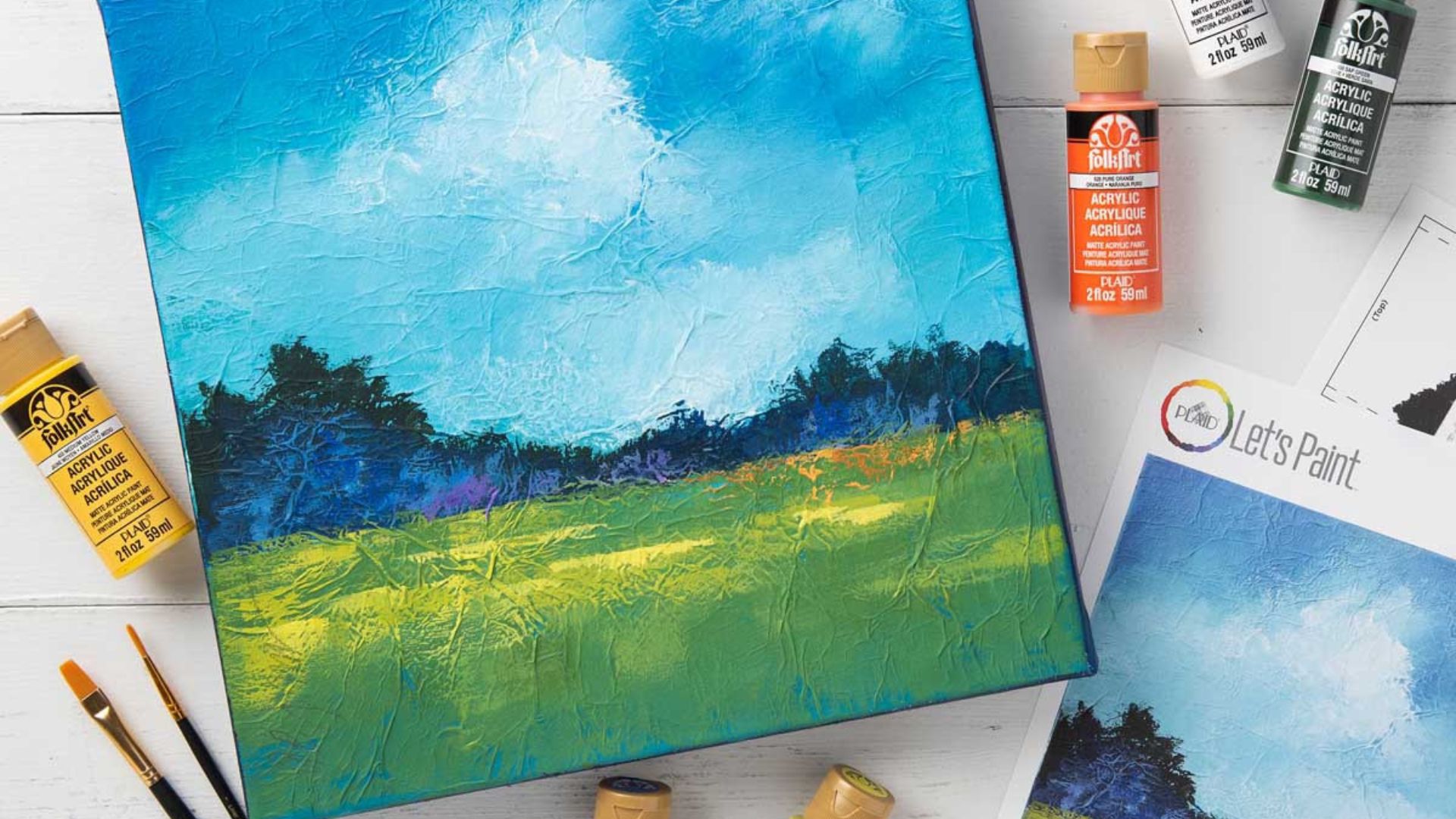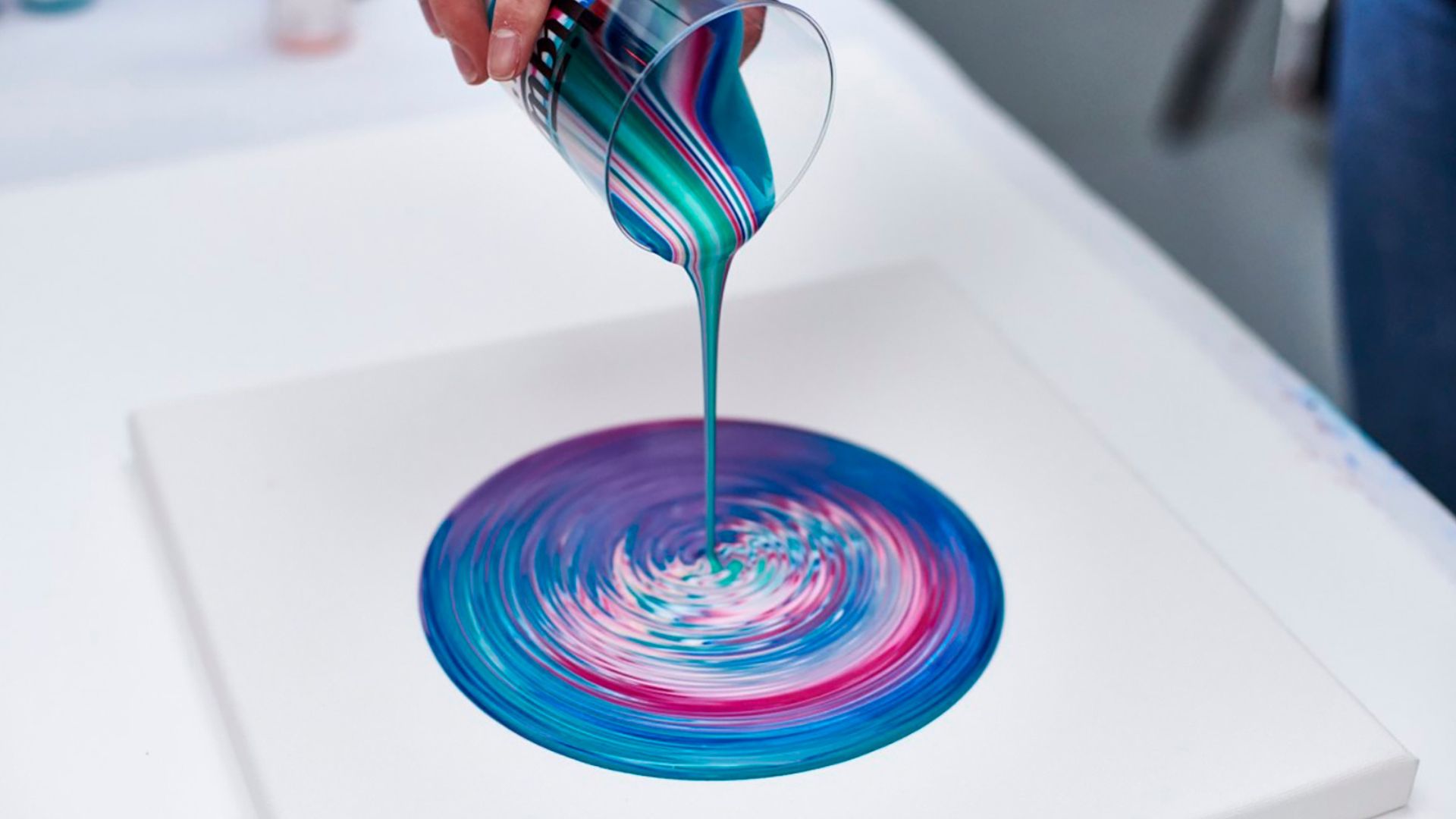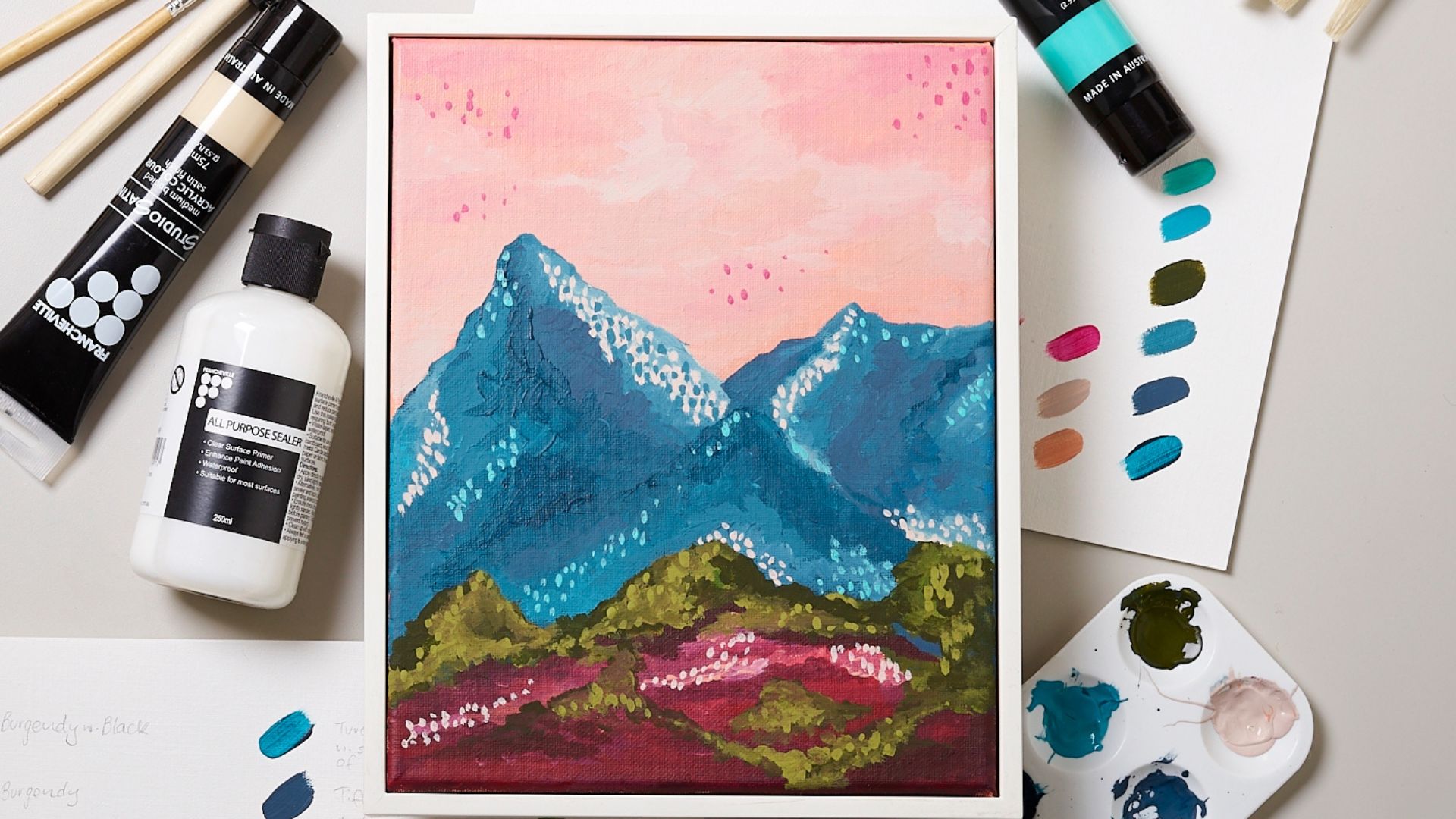 | ||
| Your browser is not supported. | ||
|
Please browse our site using any of the following options:
| ||
Acrylic Painting Techniques

Acrylic paint is beloved for its quick dry time, bright colours and flexibility, plus it cleans up easily from clothes and most surfaces. Out of all common paint types it has the most kinds of mediums, meaning you can modify your acrylic paint in all sorts of exciting ways to create different effects in your art.
At Spotlight we have a huge range of quality acrylic paints you can choose from, but what exactly can you do with these paints? In this article we'll go over some of the most common acrylic art techniques in the craft, with each of the painting methods selected to be suitable for beginners to try. Discover some of the best techniques in art right here!
Easy Acrylic Painting Techniques
Each of these painting methods will create different effects on your canvas or paper.
Pouring
You will need:
- Acrylic pouring paint OR regular acrylic paint and pouring medium
- Disposable cup
- Stirring stick
Believed to have originated with Mexican social realist artist David Alfaro Siqueiros, acrylic paint pouring involves pouring low-viscosity acrylic paint straight onto a flat canvas, rather than applying it with a knife or brush. The paint will naturally swirl and eddy into all sorts of graceful, hypnotic patterns!
Pour paints into a cup in layers before pouring, and use a stirring stick to eddy them if needed. For more paint pouring tips, read our blog on flow painting.

Splattering
You will need:
- Splatter tool OR flat paintbrush
- Protective tarp and gear
Splatter painting is believed to have originated in New York in the 1940's as a response to the censorship of certain kinds of art. This is a messy technique that can result in paint flying past the canvas, so make sure you protect your surroundings with a tarp or are working somewhere you don't mind getting paint on!
This is a pretty simple technique - simply load up your splatter tool or brush with some paint (you can even do multiple colours at once), stand back from your canvas and then swing the tool in the direction you want the paint to go OR use your finger to 'flick' the bristles of the paintbrush to release the paint! The paint will spatter in a unique pattern on your canvas… and possibly on the wall behind it too. Practice your platter skills on this canvas painting project.
Dry brushing
You will need:
- A dry, natural hair paintbrush
While the origin of dry brushing isn't really known, it was one of the very well-known art techniques practised during the Song Dynasty in China between 960-1279. You can create amazing texture perfect for showing hair, grass or hedges by dry brushing. This technique involves loading your brush with acrylic paint, but not adding any water whatsoever. When applies to canvas, you will see your brush marks coming through strongly, creating a 'scratchy' look that's hard to achieve with water or large amounts of paint.
Underpainting
You will need:
- Base acrylic colour
- Flat or mop paintbrush
Originating in the Renaissance era with the old masters, underpainting is mostly attributed to versatile artist Tiziano 'Titan' Vecelli. To 'underpaint' means to apply a layer of colour to canvas and board that will serve as the base for the rest of the painting, as opposed to the natural colour of your painting surface. Think about what you want the overall tone of your artwork to be. A moody nighttime mountainside may benefit from a dark purple underpainting, while a glorious sunset could be brightened with a yellow underpainting. Use wide brushes that can hold a lot of paint so you can create your underpainting quickly.
Sgraffito
You will need:
- Sharp tool for scratching paint (credit card, fork, palette knife etc)
This technique was actually originally used in architecture and pottery, starting in classical times in Europe. Sgraffito involves scratching away some of the top layer of paint to reveal the coloured layer underneath. Use your scratching tool to carve a design or shape into your painting, or just scratch away lines to simulate texture in your artwork.
Stippling
You will need:
- Dot tool OR small round paintbrush
This fascinating art technique was developed by Italian artist Giulio Campagnola sometime between 1509 and 1515. Stippling is the practice of creating artwork composed of tiny dots or circles. It creates an amazing level of detail that is quite pleasing to the eye! Use the status to suggest overall shapes, or to create effects like shadows or textures on objects.

Painting knife
You will need:
- Painting OR palette knife
- Impasto medium
While painting knives are usually reserved for applying oil paint, with the addition of impasto medium acrylic paint can become just as lovely and thick as its oil counterpart! You can then apply your thickened paint using a knife to create amazingly textured peaks, waves and flourishes that will dry to shape. For more information on making impasto art, check out our blog on the impasto painting technique.
One of the best acrylic painting tips for beginners is to practice your painting techniques on spare or scrap paper before trying them on what you are hoping will be a professionally finished piece. If you are just starting out, read our blog on creating your first art tool kit to get a head start on your art journey!
Try These Amazing Acrylic Painting Techniques With Spotlight
Ready to up your painting game? Try out some of these painting methods using any of Spotlight's amazing art and painting supplies! You can purchase online and have your order home delivered in no time. You can also visit your nearest Spotlight store, where our friendly team will help you find the art supplies you need to pull off any of these acrylic art techniques.
For a little more assistance in buying the right art supplies, read our paint mediums buying guide and our blog on choosing the right paintbrush.




